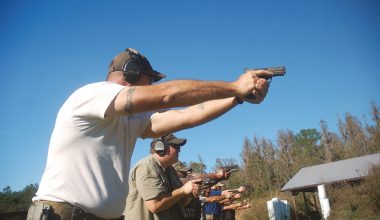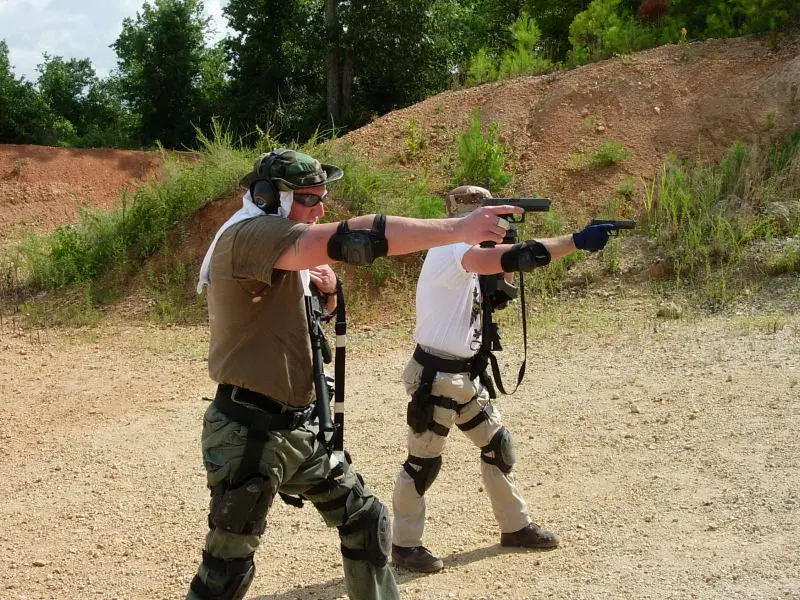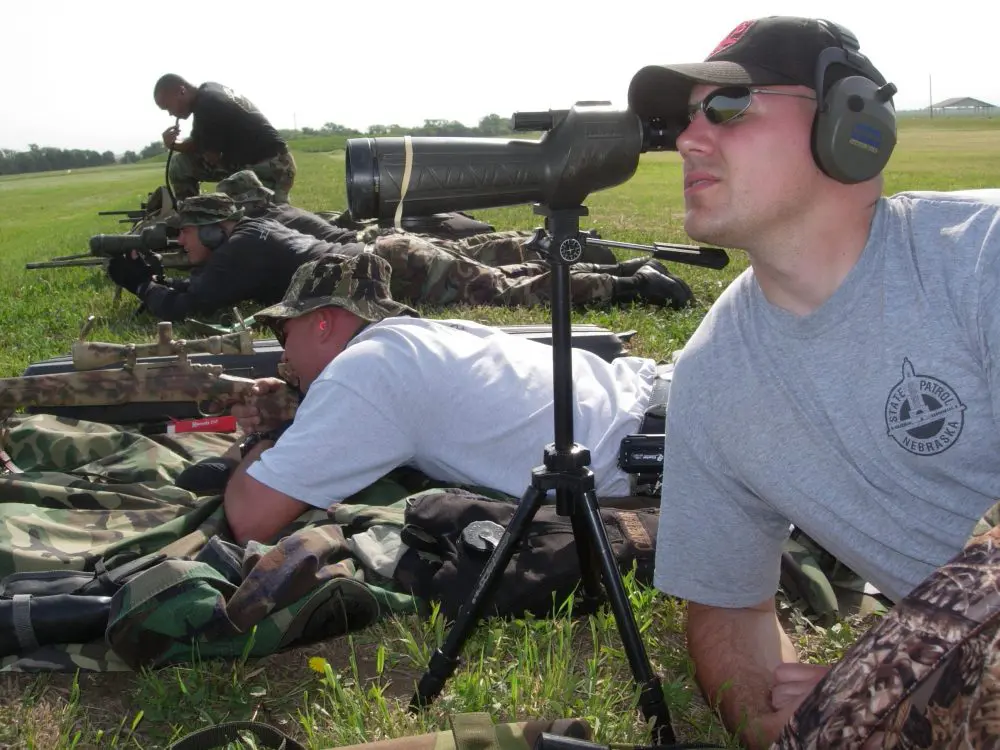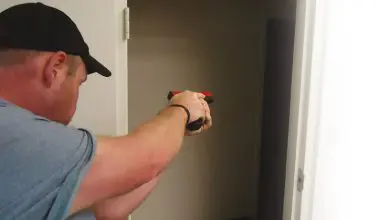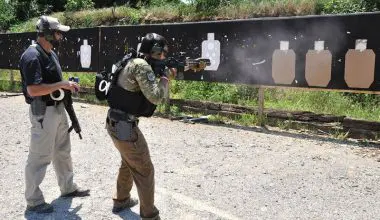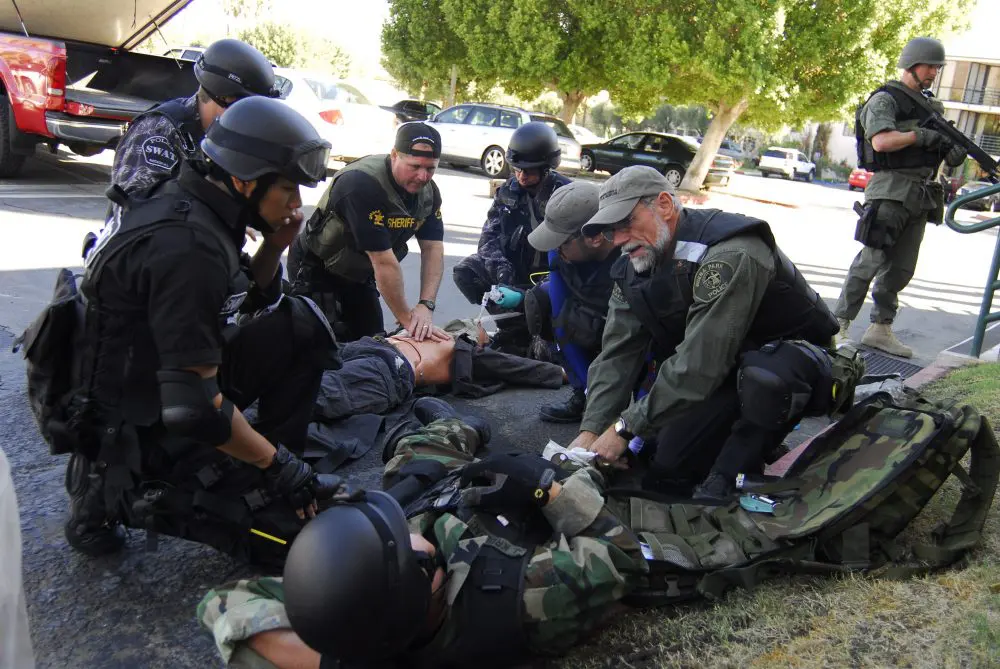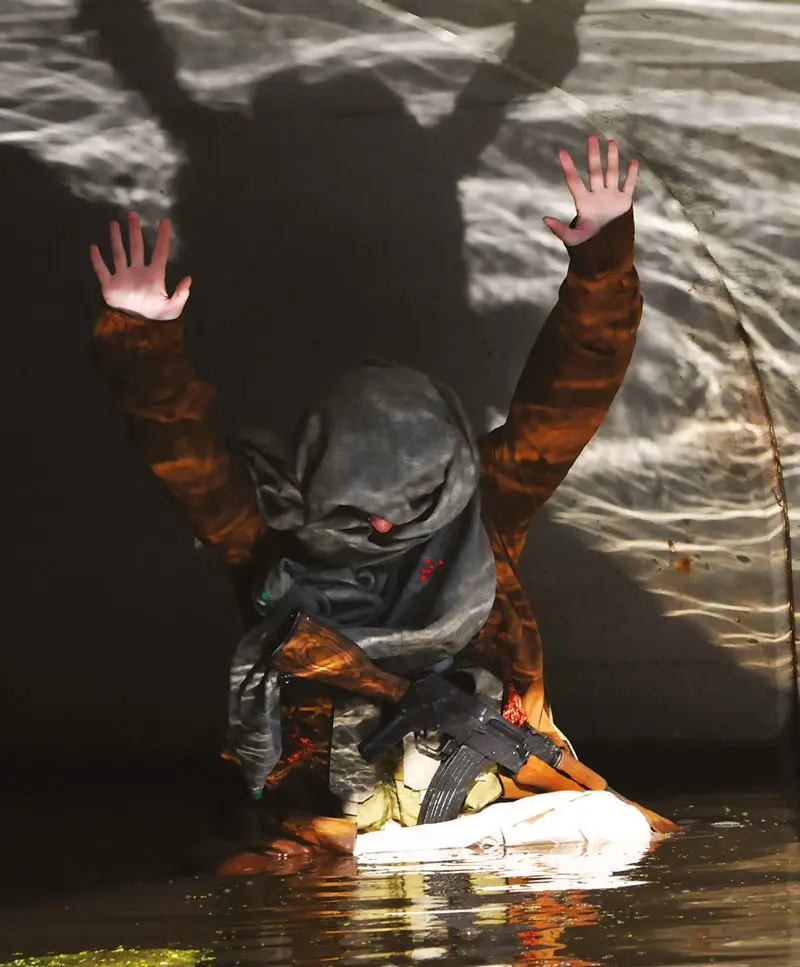
Visible (vis) lasers are to be designated as an enhancement. They are meant to supplement other solutions as part of a comprehensive tactical package. A vis laser does not replace optics or iron sights, but complements them so that overall combat effectiveness is increased. Think of a vis laser as a tier on your Gunfighting PACE (Primary, Alternate, Contingency, Emergency) Plan.
Visible lasers have two basic requirements: they must be reliable in terms of function, and they must be able to be seen in a myriad of environmental and tactical situations, to include no light, low light, bright light, rain, sleet, snow, close range and mid-range.
What is the best laser for you and your element? There is no end-all item, and you need to define your own capabilities gap. A vis laser by itself is an excellent asset. If you and your team are outfitted with Night Vision Goggles (NVGs) or plan to be in the future, it may prove more beneficial for your capabilities to go with a vis/IR laser in order to take advantage of both ends of the spectrum.
This solution costs more in the short term, but pays out big time in the long haul, especially if you take into consideration the need to replace existing vis lasers with vis/IR lasers down the road, and having bought both systems at cost.
Visible lasers include the Laser Devices International OTAL, ITAL, and GTAP. Visible/IR lasers include the LDI DBAL/PEQ-15A series and the Insight ATPIAL Series, to include the PEQ-15.
Table of Contents
IT’S BEGINNING TO LOOK A LOT LIKE CHRISTMAS: RED LASERS VS. GREEN LASERS
The human eye can distinguish color in the green spectrum/ wavelength approximately five times better than other colors. In short, the green laser is a superior choice because it can be seen more easily, at brighter intensity, and at greater distance.
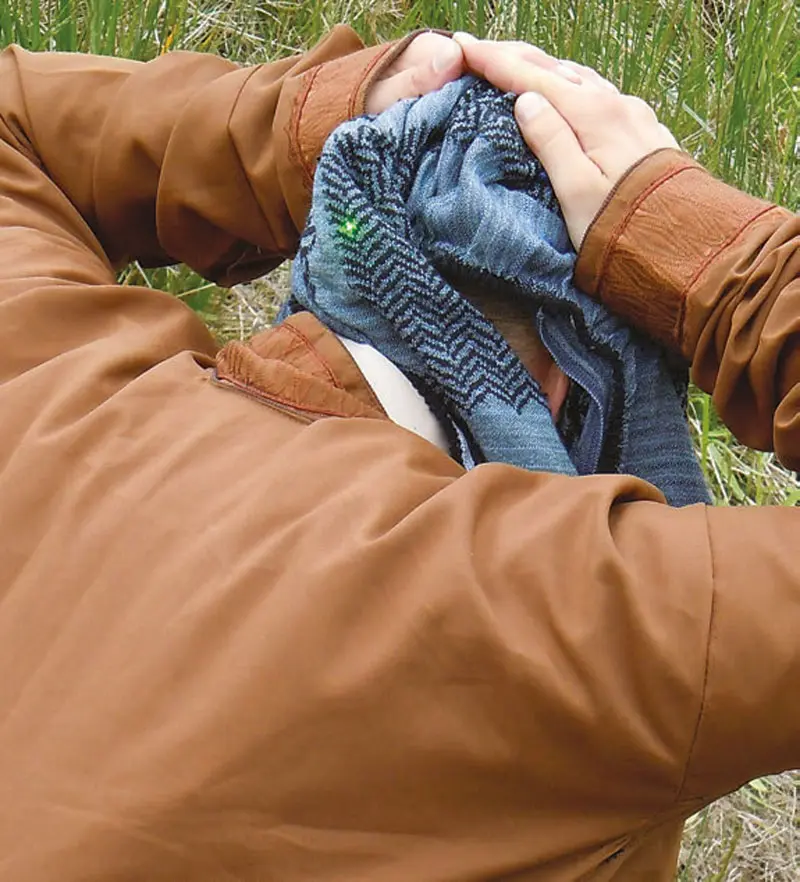
Unfortunately, the industry just realized the tactical importance of this a few years ago and has only recently offered systems with green lasers. This is compounded by the fact that many LE and Military organizations can be a bit slow to catch on and procure recent advances and developments. The only drawback to green vis laser systems is that they are not currently as reliable as the red vis laser systems in extreme temperatures.
The problem with the red laser is evident in bright sunlight. It often becomes washed out due to the sun and cannot be seen even a few feet in front of you. Due to how often we find ourselves working in bright and sunny locales, this often becomes a dealbreaker. I prefer a system that works in as many situations as possible.
INSTALLATION AND OPERATION
Lasers must be properly secured via a mount to one of the Picatinny rails. Several mounts on the market (LDI OTAL and DBAL-I2) use a proprietary tension lever throw mount that works well. LaRue offers a quick attach/quick detach mount with a locking mechanism if that capability is required.
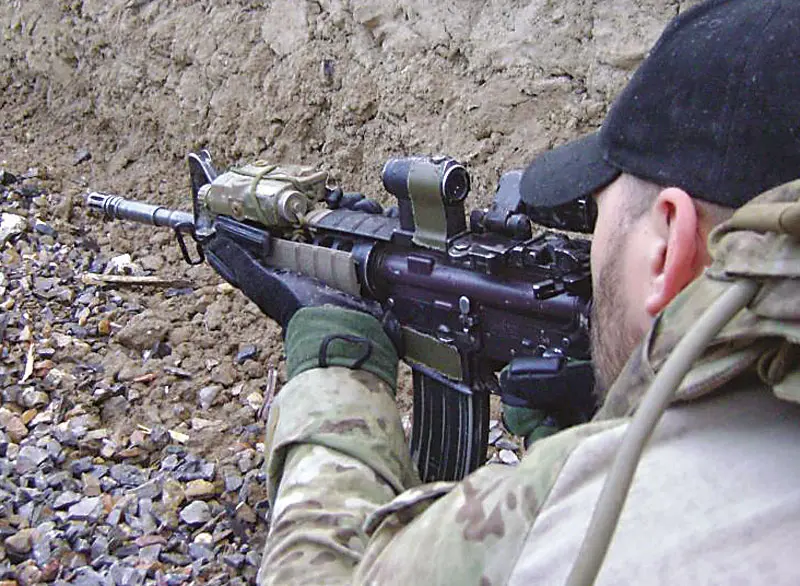
But far too often, we are stuck with what we have and can only ensure we do our utmost to mitigate the effects of the non-ideal (read: A.R.M.S.) mount we are saddled with. For the Insight ATPIAL/PEQ-15, that includes re-tightening the proprietary rail grabber bracket after firing the initial three rounds when zeroing, and applying a thread locker such as Blue Loc-Tite.
Care must be exercised when selecting a suitable area to place the remote pressure pad. Not only should hand placement be the same as for your tactical shooting system, it should be in a place where it is not easily activated inadvertently. A vis laser negligent discharge (ND) is an indicator of your presence and could potentially compromise your position and endanger your team.
End users must be proficient in both the device’s activator if it has one, as well as the remote pressure pad. The latter’s wire may be pulled out of the device or even ripped due to friction or something more sinister, but still be able to be actuated manually on the device itself.
If your system has multiple settings, these must be committed to memory so you can efficiently and confidently adjust your settings in the dark, while wearing gloves, under stress or, my personal favorite, D) all of the above.
Train for foreseeable contingencies so you aren’t surprised by them on the street or the battlefield. The bottom line is you need to be completely comfortable in the Installation, Operation, and Maintenance (IOM) of your equipment.
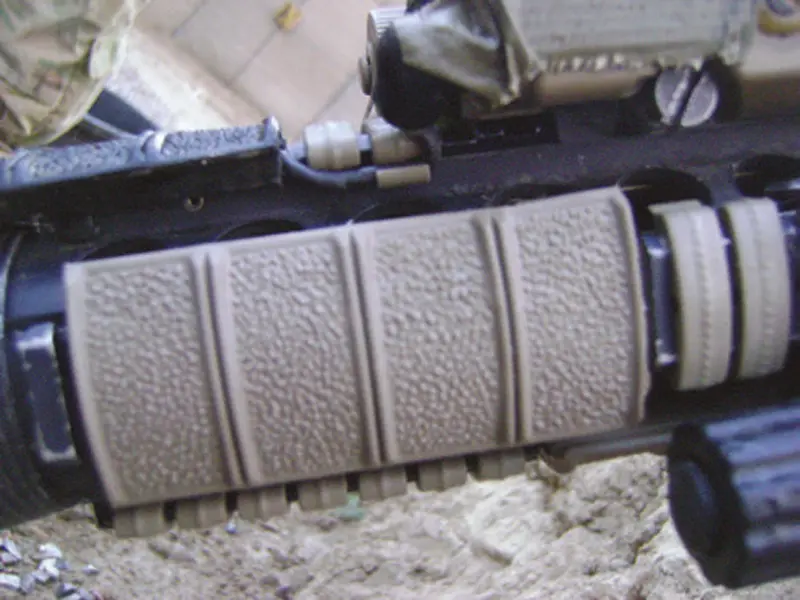
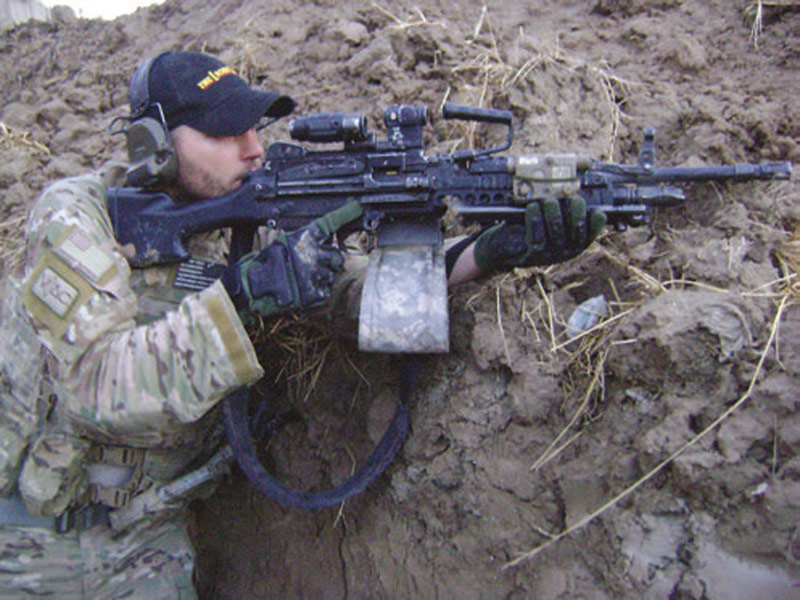
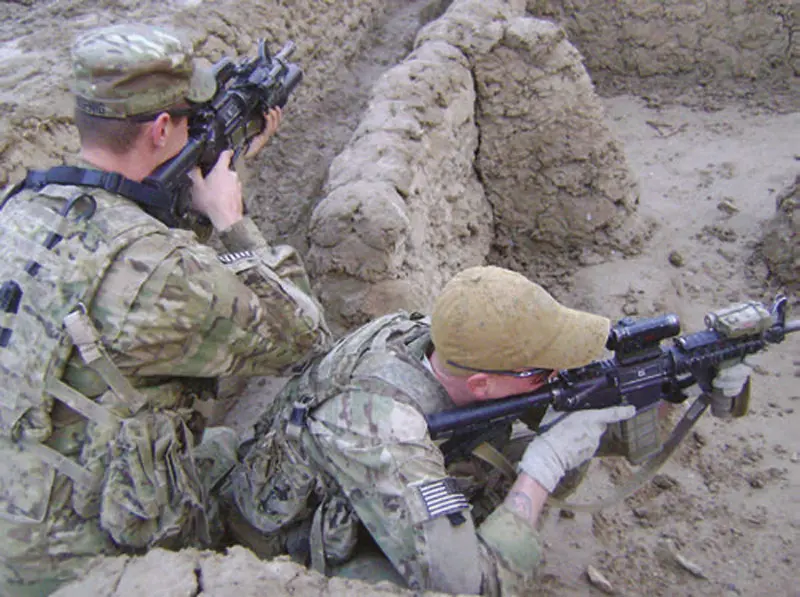
YOU MUST SEE BEFORE YOU CAN SHOOT
One drawback to the vis laser is that you need a white light in conjunction with the laser in order to effectively discriminate targets in low- or no-light environments. When illuminating a suspect to identify whether they are a friend or foe, the laser, if it needs to be employed, may be washed out due to the brightness of the lumens cast from the light. This is especially true with red lasers and suspects wearing light or bright clothing.
VIS LASERS AS A PRIMARY SIGHTING SOLUTION
Some situations may dictate employing your vis laser as the primary sighting solution. These situations may include wearing NBC/MOPP kit to include a protective mask that may make it slower and/ or more difficult to use an optic or iron sights, as well as asymmetric shooting positions that increase the difficulty of acquiring sights on target.
If you’re using the laser, use only the laser. This is accomplished by your regular shooting stance but then looking over the rifle and aiming it with the laser pointer.
VIS LASERS AS A SECONDARY SIGHTING SOLUTION
There may arise a moment when your primary sighting solution is not working and you need to transition immediately to the next line of your layered offense. This Murphy Moment can be the result of anything from user error by neglecting to turn the optic on, or an equipment failure ranging from the battery dying to a poorly conceived auto-shutoff feature that can’t be disabled, the optic being obfuscated by dirt or debris, or even the optic being dead-lined from being struck by a bullet or shrapnel.
Whatever the case may be, it may prove faster and/or more accurate to use your vis laser as a secondary sighting solution than it would be to use the optic as a ghost ring, align the backup iron sights (BUIS), or transition to a handgun in order to eliminate the threat. For a detailed look at this specific technique, please refer to Patrick A. Rogers’ excellent article Sighting Alternatives: Zeroing In On The Bad Guy (January 2011 S.W.A.T.).
TURN ON THE BAT SIGNAL
Visible lasers aren’t just for more strategically placing holes in bad guys. They have many other applications in varied environments that further increase their value.
Signaling can be used to successfully de-escalate situations. While many circumstances can be resolved by pointing lots of guns at someone who warrants such treatment, sometimes what convinces that individual to stand down is a dazzling array of lasers dancing across his chest. Perhaps he just needed the added reminder of what is oriented his way.
Signaling is a force multiplier for Soldiers in wars and low-intensity conflicts, even if those in higher echelons refuse to acknowledge its applicability in the Escalation Of Force (EOF) continuum. Simply put, the use of a vis laser is a visual indicator to people that you are vigilant and alert.
By presenting yourself and your element as a hard target, the bad guys may decide to go play in someone else’s sandbox, where the high stakes may not be so readily apparent. Again, perhaps they just needed that extra indicator of what is a mere hard scan, sight picture, and trigger squeeze away.
Signaling is also a viable tool to get the attention of friendly elements. It may be faster to lase an area of interest than to call it out verbally.
An example of this is a multi-story windowed structure that a suspect fled into and we’re working the perimeter in preparation for a tactical call out. The time it takes to notice movement in a window and verbally call out, “Movement, second floor, fourth window from the left” (or even “Movement, Bravo Four” if utilizing window marking strategies) can be substantially more than simply noticing movement and lasing the area for all to see, thereby cutting time from two of the four steps of Boyd’s OODA (Observe, Orient, Decide, Act) Loop.
Visible lasers really prove their worth when tracking moving targets and allowing teammates to gain positive identification that much faster.
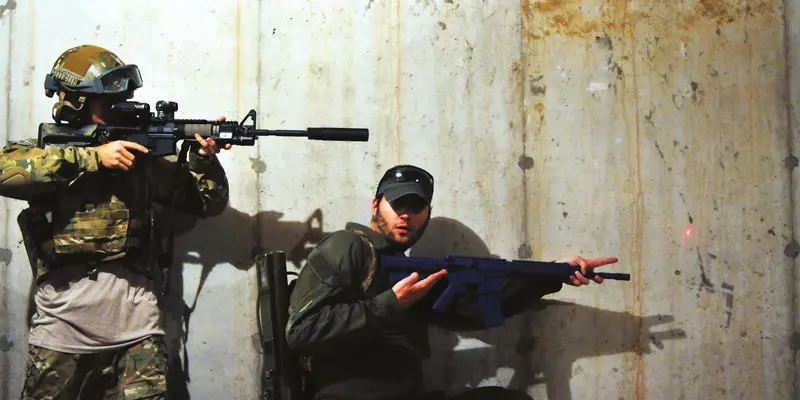
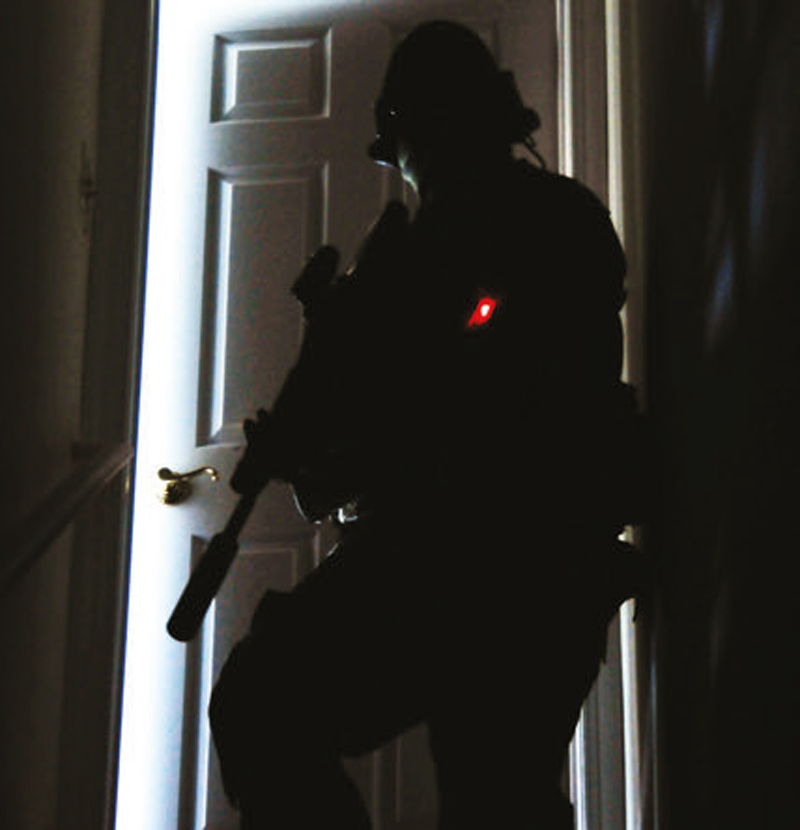
IMPORTANT SAFETY TIP, THANKS EGON
Remember that most lasers are not eye safe and that the Universal Safety Rules Plus always apply when handling firearms. In addition, rarely do LE and Military work in environments where everyone is a confirmed hostile and you are able to give a terrorist field-expedient PRK surgery prior to firing the shot your vis laser just aimed.
We typically work in areas with families, children and teammates present, and it is simply unacceptable to endanger these folks. Always do the right thing, even when you think no one is looking.
I SPY WITH MY 650NM EYE …
Visible lasers are an excellent asset for systematic clearing skill-sets and strategies in regard to booby trap detection. While the naked eye may fail to detect a tripwire, a vis laser enables more effective interrogation and identification because the laser refracts off the tripwire, or sparkles for want of a better word. It sounds My Little Pony-ish, yet that’s exactly what it does.
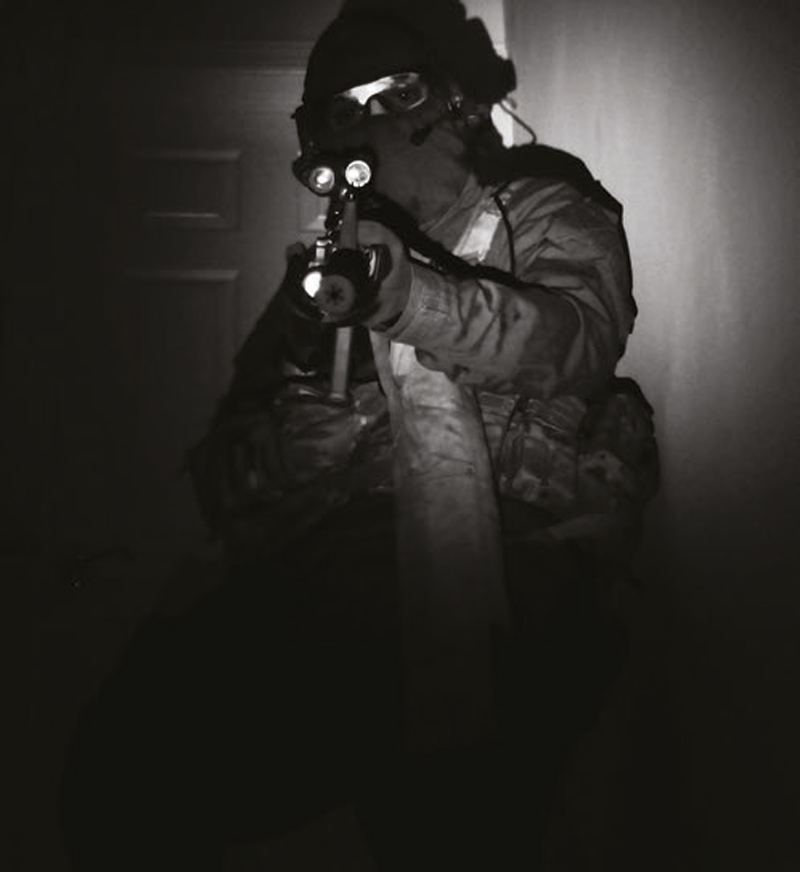
The height difference of the laser refraction off the tripwire contrasts noticeably with the laser dot on the ground. This works better as a two-man team with one lasing while the other observes, and with lethal cover in place. It may not be fast, but it is far preferable to evacuating a wounded teammate.
WELCOME TO THE PARTY, PAL!
Visible lasers can also be used standalone or in conjunction with white light (and verbal cues) as a technique for Link Up/ Consolidation Procedures for multiple friendly elements. This hits home during no light/low-light missions and when working with foreign national security forces.
Sometimes the environment does not lend itself well to the use of non-hooded white lights, and sometimes NODS/IR laser items are not fielded to personnel in sufficient numbers for it to be considered a valid TTP across the force. Effecting Link-Up is an inherently risky module, and we must strive for safety in all things. Never orient a vis laser toward a friendly element as that could very well be interpreted as hostile intent or a hostile act.
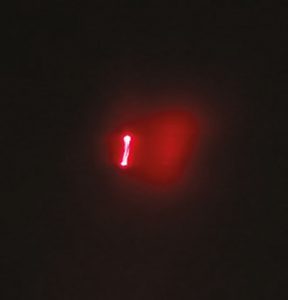
TRAINING WITH VISIBLE LASERS
In addition to shooting and signaling, vis lasers offer the ability to better refine training in other venues. Two examples are Close Quarter Battle (CQB) Training and Dry Firing.
- Visible lasers can be used in initial CQB training when doing dry runs with unloaded weapon systems, blue guns, or airsoft guns. It lets the shooter clearly designate what his assigned area of responsibility or sector of fire is (or what he thinks it is), and gives the instructor an instantly clear reference point to go off of. This allows for a rapid system that is easily verified or corrected and able to be used across several modules, including movement drills.
- Visible lasers can be used when conducting dry fire sustainment training as an additional assessment tool. Sometimes a shooter may not be able to properly diagnose a mistake he made when executing the fundamentals of marksmanship. Having a visible laser on the target allows for a clearer assessment of the basics, particularly trigger press, and is often a humbling learning experience when first used.
I hope this clarifies some points and you are better able to use a tool at your disposal or articulate a need better to your command team.
